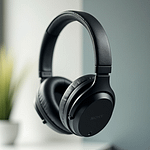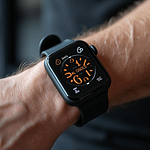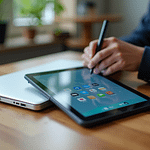Staying fit and connected doesn’t have to cost a fortune. In 2024, budget-friendly wearables offer advanced features such as heart rate monitoring, GPS tracking, and sleep analysis. Here’s a curated list of affordable wearables that deliver excellent value without sacrificing functionality.
Verdict: Affordable Yet Powerful
These wearables prove you don’t need to splurge for health and fitness tracking. With features like SpO2 monitoring, onboard GPS, and AMOLED displays, these devices deliver more than just the basics, making them perfect for beginners or budget-conscious buyers.
1. Xiaomi Smart Band 8 Pro: Budget Champion
My Experience
The Xiaomi Smart Band 8 Pro stood out with its onboard GPS and sleek AMOLED display. I used it during outdoor runs and was impressed by its accurate route tracking and vibrant visuals. Its lightweight design ensured comfort, even during long sessions, and the battery lasted nearly two weeks.
Pros and Cons
Pros:
- Onboard GPS for accurate tracking.
- AMOLED display provides vivid visuals.
- 14-day battery life for extended use.
Cons:
- Limited app integrations compared to premium models.
2. Fitbit Inspire 3: Beginner-Friendly Tracker
My Experience
The Fitbit Inspire 3 offered a seamless introduction to fitness tracking. Its heart rate monitoring and sleep tracking features helped me understand my fitness patterns. Although it lacks built-in GPS, using my phone’s GPS paired easily for outdoor walks.
Pros and Cons
Pros:
- Bright AMOLED display enhances readability.
- 10-day battery life reduces charging hassle.
- Includes one year of Fitbit Premium.
Cons:
- No built-in GPS.
3. Amazfit Bip 5: Budget Smartwatch with GPS
My Experience
The Amazfit Bip 5 delivered robust features like built-in GPS and notifications at a fraction of the cost of other smartwatches. The larger display made navigation simple, and I enjoyed its smooth integration with my smartphone for music control during workouts.
Pros and Cons
Pros:
- Built-in GPS for independent tracking.
- Large 1.91-inch display.
- 10-day battery life.
Cons:
- Limited third-party app support.
4. Huawei Band 7: Lightweight and Stylish
My Experience
The Huawei Band 7 became my go-to for everyday health tracking. Its slim design and 1.47-inch AMOLED screen provided an elegant look while delivering detailed metrics. Sleep tracking with TruSleep 2.0 was particularly insightful.
Pros and Cons
Pros:
- SpO2 and TruSleep 2.0 provide detailed health insights.
- Lightweight design for all-day wear.
- Affordable for its features.
Cons:
- Smaller screen compared to smartwatches.
5. Amazfit Band 7: Comprehensive Tracking on a Budget
My Experience
The Amazfit Band 7 surprised me with its feature set, including Alexa integration. I used it to track stress levels and workouts, and the 14-day battery life meant I didn’t worry about frequent recharging.
Pros and Cons
Pros:
- SpO2 and stress tracking add value.
- 14-day battery life on a single charge.
- Amazon Alexa support.
Cons:
- Basic design compared to premium models.
Comparison Table: Top Affordable Wearables
| Wearable | Key Feature | Price Range | Best For |
|---|---|---|---|
| Xiaomi Band 8 Pro | GPS, AMOLED display | $90 | Runners and outdoor enthusiasts |
| Fitbit Inspire 3 | Heart rate, sleep tracking | $99 | Beginners |
| Amazfit Bip 5 | GPS, smartwatch features | $70 | Fitness tracking with extras |
| Huawei Band 7 | Lightweight, TruSleep 2.0 | $50 | Everyday health tracking |
| Amazfit Band 7 | SpO2, Alexa integration | $50 | Comprehensive health metrics |
Conclusion
These affordable wearables bring premium features to budget-conscious users, making fitness tracking and health monitoring accessible. Whether you’re looking for a tracker with GPS or one with advanced health metrics, these devices deliver impressive value.








